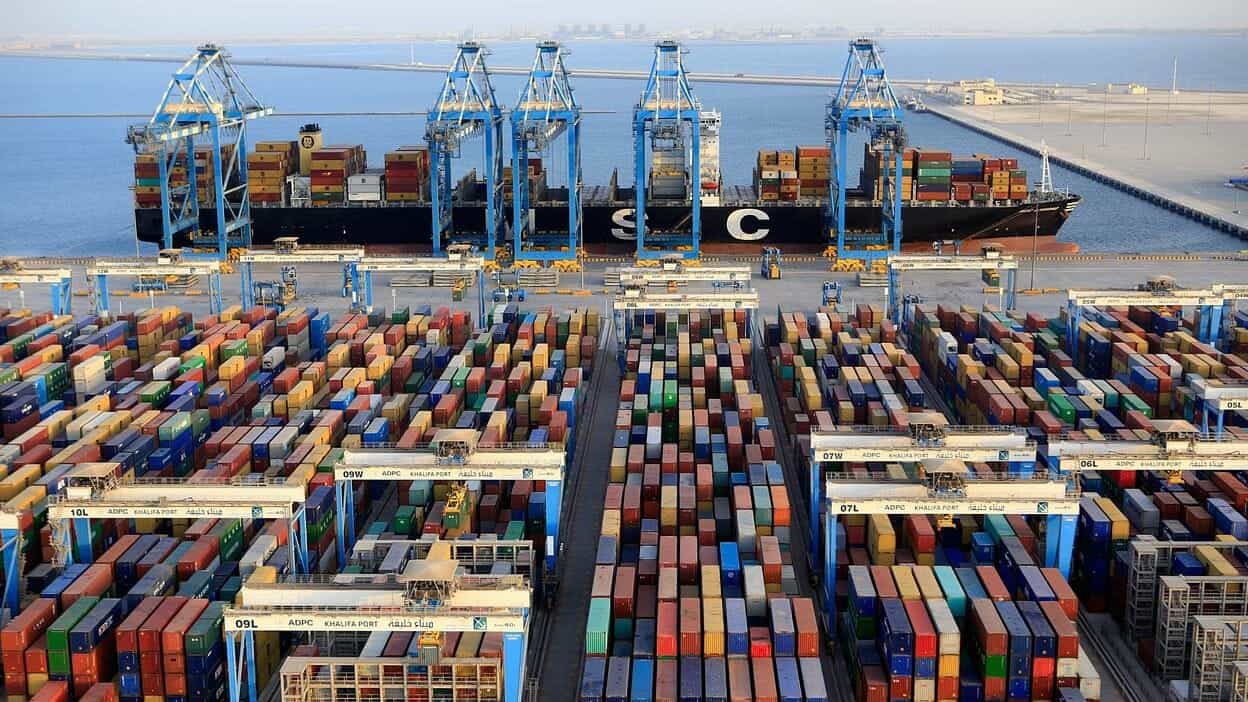The UAE accounts for 26 percent of the total non-oil trade between China and Arab nations and is home to a substantial number of Chinese citizens.
According to the Chinese statistics, there are over 4,000 Chinese-funded enterprises in the UAE. In 2020, the bilateral trade reached the U.S $49.176bn even during the pandemic, up 0.9 percent year on year.
While the UAE exports mainly petroleum, gas, petrochemicals, textiles, and seafood products to China, the UAE’s main imports are primarily consumer goods, including apparel, computers, and telecommunications.
The country is also an important part of China’s Belt and Road initiative with the Chinese Foreign Minister Wang Yi referring to it as a “shining pearl.”
“The economic ties between the two countries are getting stronger and stronger,” said Huang Meide, Deputy General Manager of Jiangsu Provincial Overseas Cooperation, and Investment Company (JOCIC).
“The UAE is now China’s largest export market and second-largest trading partner in the Arab world,” Meide added.
However, the Chinese companies, according to him, still face challenges like investing in other regions, such as cultural differences, high investment costs, and less developed industrial chains.”
The China-UAE Industrial Capacity Cooperation Demonstration Zone is a major cooperation project to translate the vision of the leaders of the two countries into action and serve the Belt and Road Initiative.
The Zone is part of KIZAD, a key component of Abu Dhabi’s Economic Vision 2030.
Geographically, it is located near Khalifa Port and has easy access to the UAE’s primary highway E11, which connects Abu Dhabi and Dubai, and the Etihad Rail, which runs via KIZAD to Khalifa Port.
The Demonstration Zone is critical for putting China’s and the UAE’s important agreement into action. The Zone’s development began in May 2018 and has not stopped even during the continuing COVID-19 pandemic.
“We have signed lease agreements with 11 manufacturers from diverse sectors and are doing everything we can to get them up and running as quickly as possible,” Meide says. The 2.2-kilometer start-up area is expected to be finished in 2025.”
In addition to industrial cooperation, the zone will offer legal services, business consulting, vocational education, and technical innovation. As a result, the Jiangsu Department of Commerce, Jiangsu Department of Education, Jiangsu Department of Justice, Jiangsu Center for International Technology Transfer, and UAE University have developed relationships with JOCIC.
According to Meide, the Zone may be a great platform and stepping stone for Chinese enterprises to establish and expand their businesses in the MENA region and assist the UAE’s industrial development and diversification. By utilizing China’s enormous industrial capacity, the Demonstration Zone will help form industrial chains and non-oil economic development.
“The Demonstration Zone will be a driving factor for the Belt and Road Initiative in the region,” he said. ” We aim to build it into a model project of the Belt and Road cooperation to which both countries are dedicated.”
China’s leadership in the region
China’s growing influence and presence in the MENA region have raised concerns in the west and worldwide about Beijing’s long-term intentions and implications for regional competition. The region has become increasingly important to Beijing’s economic interests and pursuit of global influence.
“After over 40 years’ reform and opening, China has become the second-largest economy in the world, and its economy is still growing even during the pandemic,” Meide commented. “Last year, China became the biggest trading partner for more than 120 countries and regions globally. The economic partnerships between China and the other countries will lead to win-win outcomes and benefit all. ”
According to Carnegie Middle East Center, China will continue to consolidate its economic, diplomatic presence in the MENA area in the coming years, although at a slower pace than in the previous decade due to its newfound focus on domestic growth in the face of global uncertainties.
However, China is not seeking to replace the west as the region’s dominant security player, and it is unlikely to do so in the near future. Instead, it is likely to maintain a policy of neutrality motivated by its self-interest in opening new markets in the fields of culture, space, clean energy, technology, and artificial intelligence.








